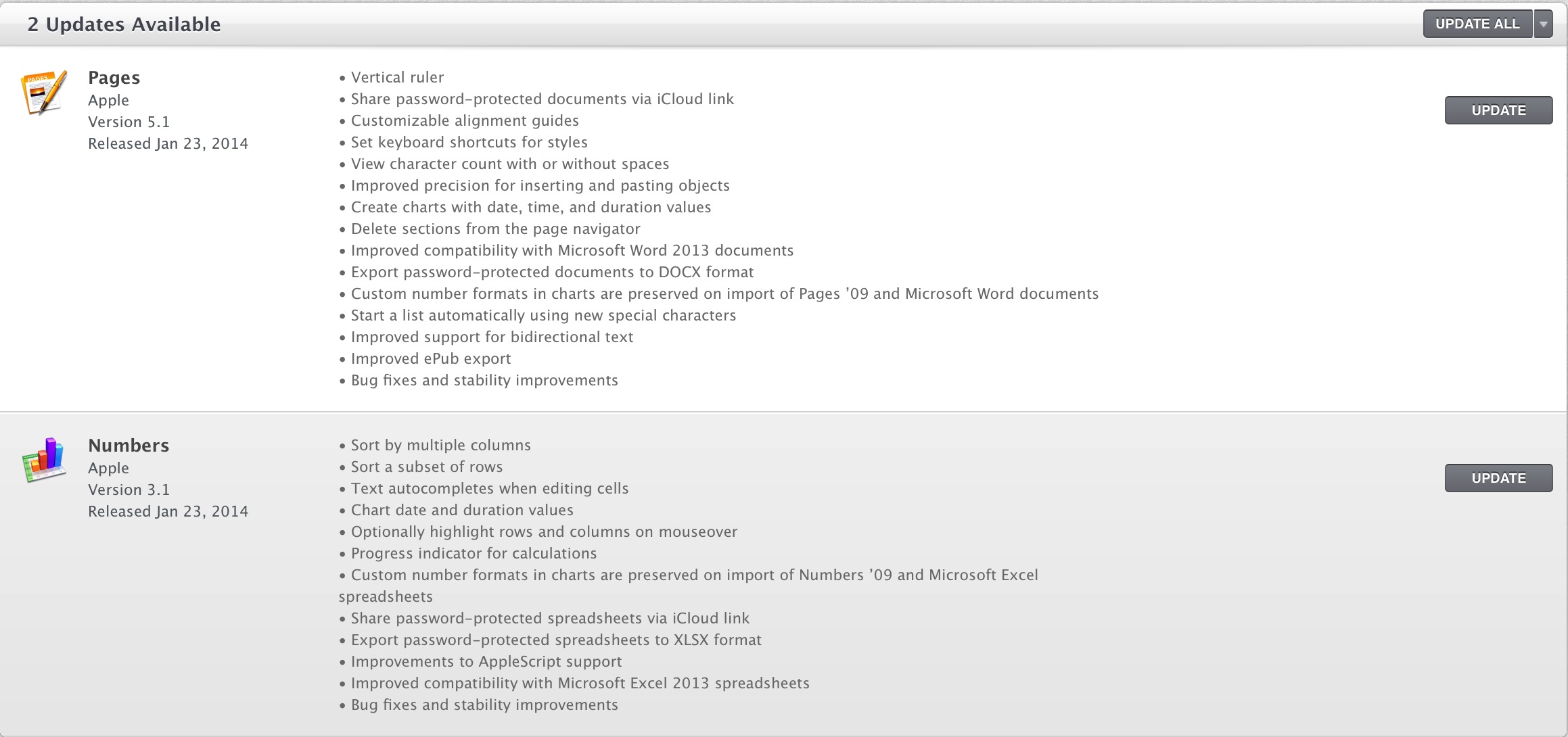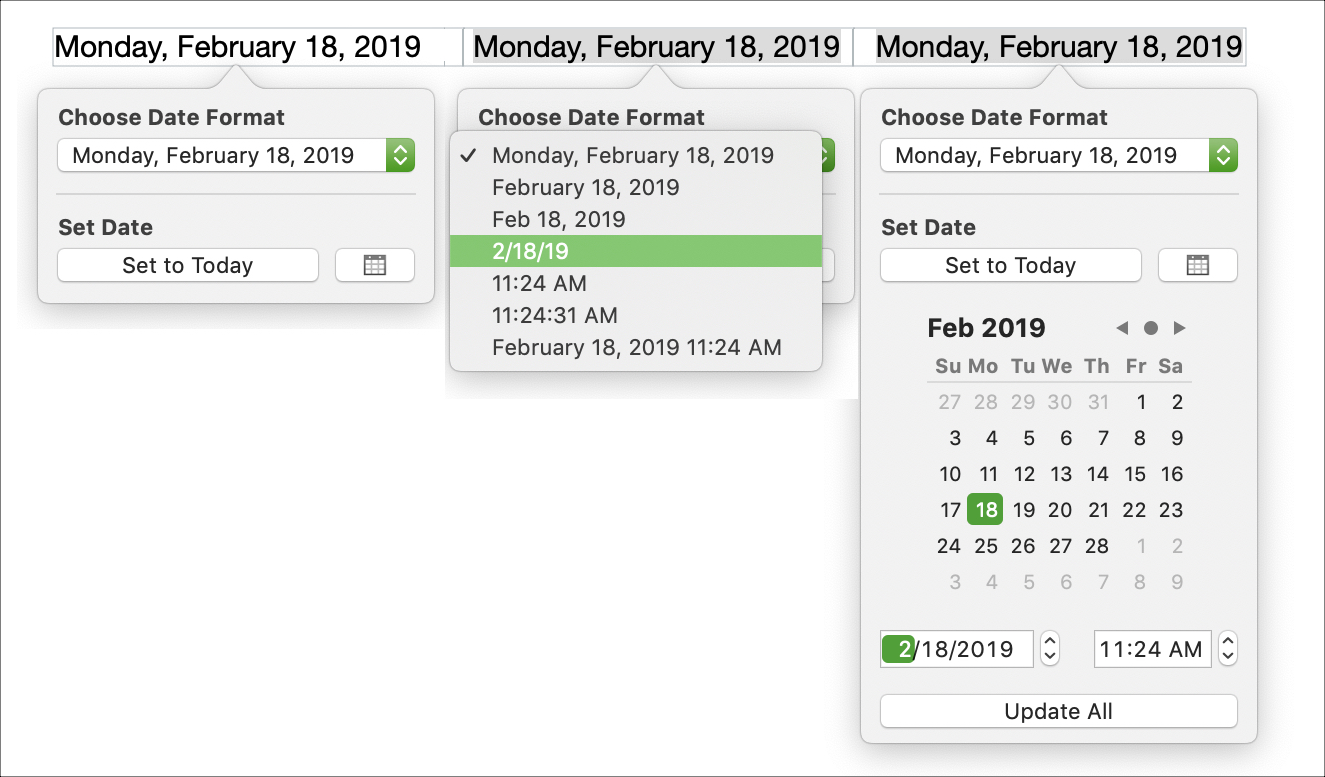

- Pages for mac update install#
- Pages for mac update driver#
- Pages for mac update upgrade#
- Pages for mac update windows#
One strategy is to have a system and home partition, and use a swap file (I have not tried to use logical partitions). That leaves 2 primary partitions for Arch. Note that MBR is limited to 4 primary partitions (including the efi partition).
Delete the empty space partition and partition the space as you would for any other installation. dev/sda4 - 100MiB hfs+ Boot Arch Linux from the Apple boot loader (optional) Note: For more information on partitioning, see Partitioning partition mountpoint size type label OS X's EFI partition can be shared with Arch Linux, making the creation of an additional EFI partition dedicated to Arch completely optional. This will set GRUB as the default boot option (holding alt at startup goes to the mac boot options screen still. Finally, finish up again in OS X by blessing the partition. Pages for mac update install#
Follow the GRUB EFI install procedure, and mount your /efi directory to the hfs+ partition you created. If you want to be able to boot GRUB from the Apple boot loader, you can create a small hfs+ partition (for convenience, use OS X to format it in Disk Utility.app afterwards).Configuration of boot options can then be done from a refind_nf in Arch's /boot directory.
Pages for mac update driver#
Following that, copy the driver folder from the installation tarball into the new rEFInd location, and uncomment the lines "scan_all_linux_kernels" and "also_scan_dirs" options in nf.

The easiest dual-boot option is to install rEFInd from inside OS X, to its root directory (default for install.sh).The swap partition is optional on machines with 4GB of RAM or more.It is possible to resize the newly created partition from within the Arch installation media, or delete it in order to proceed with the creation of other partitions (eg. Boot the Arch installation media or LiveUSB by holding down the Alt during boot.If not, then you may need to fix your partitions from within OS X first.
 If the above completed successfully, then you can continue. Keep in mind the new partition will be formatted in Arch Linux, so you can choose any partition type you want. Add a new partition by pressing the + button and choose how much space you want to leave for OS X, and how much for the new partition. Select the drive to be partitioned in the left-hand column (not the partitions!). In OS X, run Disk Utility.app (located in /Applications/Utilities). After the OS X partition has been resized, FileVault 2 can be re-enabled. Warning: If your OS X partition is encrypted with FileVault 2, you must disable the disk encryption before proceeding. If you wish to keep OS X, the easiest way is to use partitioning tools in OS X and then finish with Arch Linux tools. You need to partition your hard drive while keeping the partitions used for OS X/Windows. Once done, you can continue to #Installation.Īrch Linux with OS X or other operating systems If you want to configure your system in order to have full-disk encryption, please look at the Dm-crypt/Encrypting an entire system page for details.Īn example for a very basic partitioning, that does not consider a separate /home partition nor encryption or LVM, is the following: Please keep in mind that the volume of the startup sound can only be modified reliably in OS X. Just boot in OS X, mute your system sound and reboot again to the Arch Linux Installation media. Note: It is advisable to disable the MacBook startup sound before proceeding with partitioning. If your mac finds and installs any updates, make sure to reboot your computer, and then check again for updates to make sure that you installed everything. In OS X, open the App Store and check for updates. Post-installation: MacBook-specific configuration.īefore proceeding with the installation of Arch Linux, it is important to ensure that the latest firmware updates for your MacBook are installed. Install Arch Linux: Actually installing Arch Linux. Setup boot loader: Making sure that the new partition is bootable. Partition: Resizing or deleting the OS X partition to create partitions for Arch Linux. Firmware updates: It always helps to start from a clean, backed up, and up-to-date install of OS X. Specifically, the procedure for installing Arch Linux on a MacBook is:
If the above completed successfully, then you can continue. Keep in mind the new partition will be formatted in Arch Linux, so you can choose any partition type you want. Add a new partition by pressing the + button and choose how much space you want to leave for OS X, and how much for the new partition. Select the drive to be partitioned in the left-hand column (not the partitions!). In OS X, run Disk Utility.app (located in /Applications/Utilities). After the OS X partition has been resized, FileVault 2 can be re-enabled. Warning: If your OS X partition is encrypted with FileVault 2, you must disable the disk encryption before proceeding. If you wish to keep OS X, the easiest way is to use partitioning tools in OS X and then finish with Arch Linux tools. You need to partition your hard drive while keeping the partitions used for OS X/Windows. Once done, you can continue to #Installation.Īrch Linux with OS X or other operating systems If you want to configure your system in order to have full-disk encryption, please look at the Dm-crypt/Encrypting an entire system page for details.Īn example for a very basic partitioning, that does not consider a separate /home partition nor encryption or LVM, is the following: Please keep in mind that the volume of the startup sound can only be modified reliably in OS X. Just boot in OS X, mute your system sound and reboot again to the Arch Linux Installation media. Note: It is advisable to disable the MacBook startup sound before proceeding with partitioning. If your mac finds and installs any updates, make sure to reboot your computer, and then check again for updates to make sure that you installed everything. In OS X, open the App Store and check for updates. Post-installation: MacBook-specific configuration.īefore proceeding with the installation of Arch Linux, it is important to ensure that the latest firmware updates for your MacBook are installed. Install Arch Linux: Actually installing Arch Linux. Setup boot loader: Making sure that the new partition is bootable. Partition: Resizing or deleting the OS X partition to create partitions for Arch Linux. Firmware updates: It always helps to start from a clean, backed up, and up-to-date install of OS X. Specifically, the procedure for installing Arch Linux on a MacBook is: Pages for mac update upgrade#
7.1.1 Mavericks upgrade breaks Arch boot option. 6.18 Avoid long EFI wait before booting. 6.17.1.2 Step 2: change "Home" permissions. 6.1.2 iMac 2020 (with AMDGPU and 5k retina resolution). 4.4 Installing GRUB to EFI system partition directly. 4.2 Using the native Apple boot loader with GRUB. 4.1 Using the native Apple boot loader with systemd-boot (Recommended). Pages for mac update windows#
3.3 OS X, Windows XP, and Arch Linux triple boot. 3.2 Arch Linux with OS X or other operating systems.








 0 kommentar(er)
0 kommentar(er)
